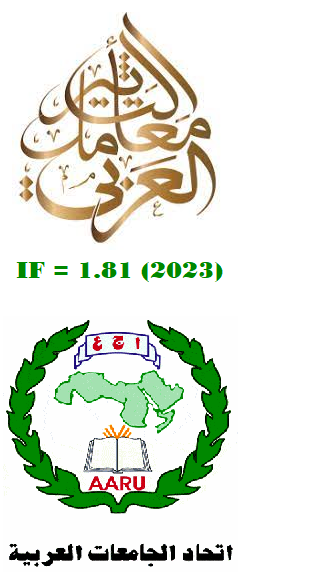A Linguistic-stylistic Analysis of Lewis Carroll’s Jabberwocky
Abstract
This article attempts at conducting a stylistic analytical study of a renowned poem by Lewis Carroll, Jabberwocky. It tries to unveil the variations and schemes of linguistic stylistics that can be found in the poem. Carroll’s famed poem captivates with its linguistic deviations and imaginative storytelling. This scholarly investigation embarks on a comprehensive stylistic analysis of the iconic poem, delving into its distinctive linguistic features. By exploring Carroll’s masterful manipulation of language, especially in the realm of linguistics and stylistics, this research aims at unraveling the poetic brilliance and esthetic allure of Jabberwocky. The inquiry commences with a meticulous examination of Carroll’s artful utilization of linguistic play, boldly challenging conventional language norms and stretching the reader’s comprehension. The poem’s unique blend of real and invented words creates boundless creativity. His language exhibits distinctiveness and versatility, employing a diverse array of grammatical and poetic devices to manifest his unique style, thereby adding depth and intrigue to the poem. The methodology entails a comprehensive stylistic analysis based on Geoffrey Leech’s eight models of deviations and schemes. Overall, this article will show how linguistic-stylistic bridges the gap between language and literature studies, enriching researchers’ understanding of poetry within applied linguistics by scrutinizing the poet’s linguistic devices, structures, and effects. The article will encompass a theoretical explanation within the domains of literary analysis, poetic language analysis, and cognitive poetry in the realm of linguistic analysis.
Downloads
References
Abrams, M.H., & Harpham, G.G. (2009). A Glossary of Literary Terms. 9th ed. Boston: Cengage Learning.
Aitchison, J. (1999). Teach Yourself Linguistics. New York: McGraw-Hill.
Aslam, S., Aslam, B., Mukhtar, P., & Sarfaraz, A. (2014). Stylistics analysis of the poem Bereft by Robert Frost. European Journal of Research and Reflection in Arts and Humanities, 2(1), 1-5.
Ayodabo, O., & Butari, N. (2015). Issues in Language and Linguistics; Perspectives from Nigeria. Vol. 3. Nigeria, Ilorin: Haytee Press and Publishing Co Nig. Ltd.
Bosan, R., & Paul, P.N. (2022). A linguistic stylistic analysis of sade Adeniran’s Imagine This. Voices: A Journal of English Studies, 7, 132-142.
Bradford, R. (1997). Stylistics. London: Routledge.
Burke, M. (2014). Routledge Handbook of Stylistics. New York: Routledge.
Carter, R., & Peter S. (2008). The Language and Literature Reader. New York: Routledge.
Crystal, D. (2008). A Dictionary of Linguistics and Phonetics. 6th ed. New Jersey: Wiley-Blackwell.
Khan, A.B., Summara, R., & Saddique, G. (2014). Stylistic analysis of the the poem “ONSET” by Robert frost. International Journal of Academic Research and Reflection, 2(4), 121-126.
Kumar, S. (1987). Stylistics and Text Analysis. Delhi: Bahri.
Leech, G. (1969). A Linguistic Guide to English Poetry. London: Longman.
Leech, G. (1985). A Comprehensive Grammar of the English Language. London: Longman Group Limited.
Leech, G.N., & Short, M.H. (1981). Style in Fiction. London: Longman.
Leech, G.N., & Short, M.H. (1996). Style in Fiction: A Linguistic Introduction to English Fictional Prose. London: Routledge.
Leech, G.N., & Short, M.H. (2007). Style in Fiction. Harlow: Pearson Education Limited.
McIntyre, D. (2014). The year’s work in stylistics 2013. Language and Literature, 23(4), 389-401.
Nørgaard, N., Montoro, R., & Busse, B. (2010). Key Terms in Stylistics. London and New York: Continuum.
Thomason, E. (ed.). (2001). Poetry for Students. Vol. 11. Michigan: Gale Group.
Verdonk, P. (2002). Stylistics. Oxford: Oxford University Press.
Wales, K. (1989). A Dictionary of Stylistics. London: Longman Group UK Limited.
Wales, K. (2001). A Dictionary of Stylistics. Harlow: Longman.
Watts, R.J. (1981). The Paralinguistic Analysis of the Narrative Text: Narrative Co-Operation in Charles Dickens’s “Hard Time.” Tübingen: G. Narr Verlag.
Widdowson, H.G. (1975). Stylistics and the Teaching of Literature. London: Longman.
Widdowson, H.G. (1986). Learning Purpose and Language Use. Oxford: Oxford University Press.
Copyright (c) 2024 Shokhan M. Fatah, Areen A. Muhammed

This work is licensed under a Creative Commons Attribution-NonCommercial-NoDerivatives 4.0 International License.
Authors who publish with this journal agree to the following terms:
1. Authors retain copyright and grant the journal right of first publication with the work simultaneously licensed under a Creative Commons Attribution License [CC BY-NC-ND 4.0] that allows others to share the work with an acknowledgment of the work's authorship and initial publication in this journal.
2. Authors are able to enter into separate, additional contractual arrangements for the non-exclusive distribution of the journal's published version of the work (e.g., post it to an institutional repository or publish it in a book), with an acknowledgment of its initial publication in this journal.
3. Authors are permitted and encouraged to post their work online (e.g., in institutional repositories or on their website) prior to and during the submission process, as it can lead to productive exchanges, as well as earlier and greater citation of published work (See The Effect of Open Access).









